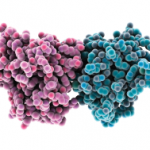Research presented at the 2010 ACR Research and Education Foundation (REF) Investigators’ Meeting in June covered subjects on the pathogenesis and treatment of rheumatoid arthritis (RA) as diverse as the expertise of those involved. These presentations included new research on the role of periodontal disease in promoting systemic inflammation, the underlying mechanisms involved in heart dysfunction, and the influence of lipid-metabolizing enzymes in immune regulation to name a few.
Held in Fort Worth, Texas, the meeting allowed physicians and basic scientists to discuss their research programs as well as network and initiate collaborations across disciplines, said E. William St.Clair, MD, president of the REF, which funds the Within Our Reach: Finding a Cure for Rheumatoid Arthritis grants received by all attendees. Dr. St.Clair is professor of medicine and immunology at Duke University Medical Center, Durham, N.C.
By the middle of 2010, $24 million in grant funds will have been awarded, totaling more than 50 grants, Dr. St.Clair said. “We have increased the critical mass of rheumatoid arthritis investigators,” he says, noting that roughly 25% of those funded hadn’t previously conducted rheumatoid arthritis (RA) research. “The overarching goal is to stimulate innovative research.”
Some grant recipients have already made scientific advances that helped them obtain even larger National Institutes of Health grants, Dr. St.Clair said. Since 2007, 65 publications in peer-reviewed journals have stemmed directly from Within Our Reach–funded projects. Here are some key research highlights presented at June’s meeting.
Proteins and Heart Disease Risk
Subramaniam Pennathur, MBBS, a nephrologist and assistant professor in the Department of Internal Medicine at the University of Michigan, Ann Arbor, was already pursuing research into lipoproteins and cardiovascular disease when he became interested in the risk of cardiovascular disease in RA, including underlying mechanisms.
Despite the higher risk of cardiovascular disease in the RA population, prior research has indicated that traditional heart risk factors—as identified by the Framingham Heart Study—aren’t as predictive in RA patients compared with the general population, he said. This discrepancy raises the question of whether other risk factors might play a role in increasing cardiovascular disease and if unique biomarkers could be identified to predict which individuals are more susceptible to this complication.
Although much research to date has focused on the role of low-density lipoproteins (LDL) in promoting cardiovascular disease, Dr. Pennathur has always been intrigued by the role of their high-density counterparts, HDL. Despite their reputation as the so-called “good cholesterol,” high levels of HDL have not prevented heart disease in some individuals, he said. “Maybe the HDL is getting somehow dysfunctional, and it’s not working as well as it should,” said Dr. Pennathur.
